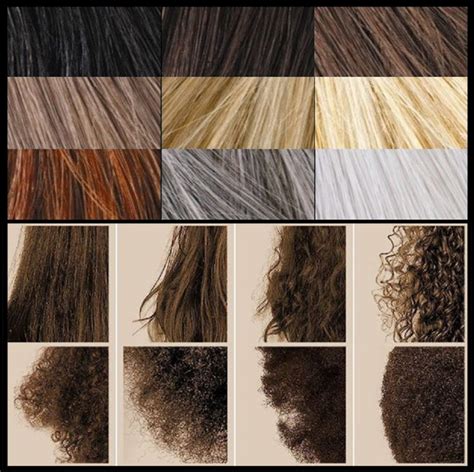Human Hair Color: A Genetic Puzzle
Human hair color is a fascinating and complex trait that has captivated scientists and artists for centuries. Determined by a combination of genetic and environmental factors, hair color can vary from jet black to platinum blonde and everything in between. Understanding the genetics of hair color can help us trace our ancestry, predict the appearance of our offspring, and even develop new treatments for certain diseases.

The Basic Biology of Hair Color
The pigment that gives hair its color is called melanin. Melanin is produced by cells called melanocytes, which are found in the hair follicles. There are two main types of melanin: eumelanin, which produces brown and black hair, and pheomelanin, which produces red hair. The amount and type of melanin produced by the melanocytes determine the color of a person’s hair.
Genetics of Hair Color
The genes that control hair color are located on several different chromosomes. The most important of these genes is the melanocortin-1 receptor (MC1R) gene. The MC1R gene produces a protein that binds to melanin-stimulating hormone (MSH), which in turn stimulates the production of melanin. Variations in the MC1R gene can lead to different hair colors.
For example, people with two copies of the light-colored MC1R gene will have blond hair. People with one copy of the light-colored MC1R gene and one copy of the dark-colored MC1R gene will have brown hair. People with two copies of the dark-colored MC1R gene will have black hair.
Environmental Factors That Affect Hair Color
In addition to genetics, environmental factors can also affect hair color. Exposure to sunlight can lighten hair, while certain chemicals can darken hair. Some medical conditions, such as thyroid disease, can also affect hair color.
Cultural and Social Significance of Hair Color
Hair color has long been a symbol of beauty and identity. In many cultures, certain hair colors are associated with certain personality traits or social status. For example, in Western culture, blond hair is often seen as a sign of beauty and youth, while black hair is often seen as a sign of strength and power.
The Future of Hair Color Research
Hair color research is a rapidly growing field. Scientists are working to better understand the genetics of hair color and how it is affected by environmental factors.
6 Ways to Naturally Lighten Your Hair
- Spend time in the sun. The sun’s ultraviolet (UV) rays can lighten hair over time.
- Use lemon juice. Lemon juice is a natural bleaching agent.
- Apply honey. Honey is a natural humectant, which means it can help to keep hair moist and prevent it from becoming dry and brittle.
- Try chamomile tea. Chamomile tea is a natural lightener that can be used to lighten hair gradually.
- Use apple cider vinegar. Apple cider vinegar is a natural acid that can help to remove buildup from hair and lighten it over time.
- Apply baking soda. Baking soda is a natural exfoliant that can help to remove buildup from hair and lighten it over time.
FAQs About Hair Color
- What is the most common hair color in the world? Black hair is the most common hair color in the world, with approximately 80% of the population having black hair.
- What is the rarest hair color in the world? Red hair is the rarest hair color in the world, with only about 1-2% of the population having red hair.
- Can hair color change over time? Yes, hair color can change over time. As people age, their hair often becomes lighter. Hormonal changes, such as pregnancy and menopause, can also affect hair color.
- Is hair color linked to personality? There is no scientific evidence to support the claim that hair color is linked to personality. However, certain hair colors may be more common in certain cultures or ethnic groups, which can lead to stereotypes about personality.
- Can hair color be changed permanently? Yes, hair color can be changed permanently with hair dye. However, it is important to note that hair dye can damage hair, so it is important to use it sparingly.
- Can hair color be used to diagnose medical conditions? Yes, hair color can be used to diagnose certain medical conditions, such as thyroid disease and anemia.
Conclusion
Human hair color is a complex and fascinating trait that is influenced by both genetics and environmental factors.
Through continued research, we will continue to learn more about the genetics of hair color and how it is affected by environmental factors. New applications of this knowledge could lead to new treatments for certain diseases and even new ways to change hair color.
